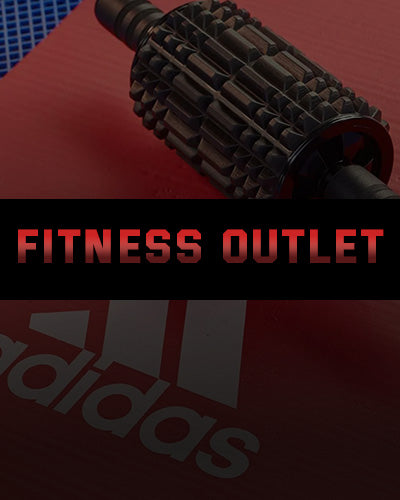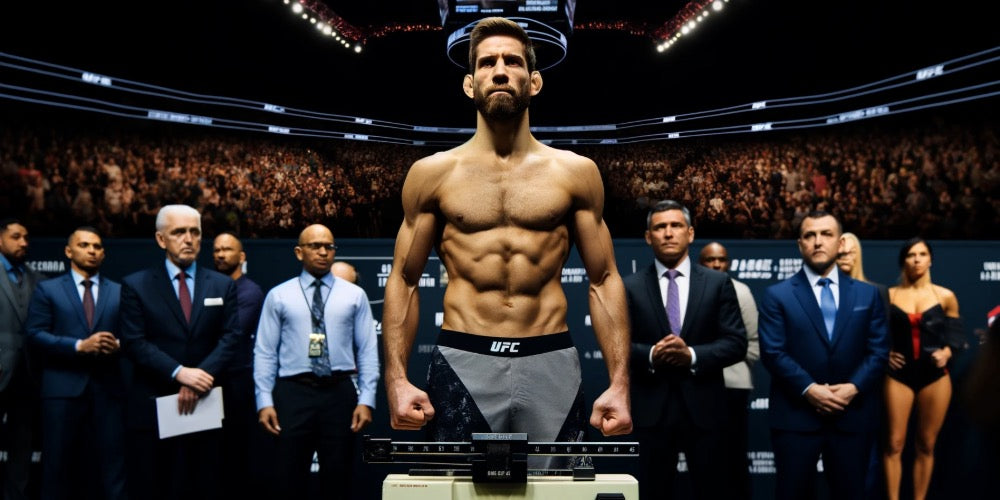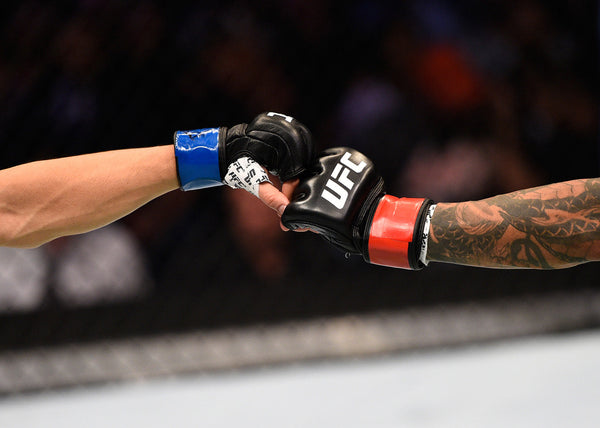Table of content
In the competitive world of mixed martial arts (MMA), fighters often go to great lengths to gain an edge over their opponents, and one of the most talked-about methods is weight cutting.
Ever caught fighters chatting about "making weight"? Well, that's exactly what we're talking about here. So let's explore how MMA fighters shed those pounds and why they do it!
Understanding Weight Cutting in Combat Sports
At its core, MMA weight cutting is about losing body weight quickly before a fight, only to regain it right after weigh-ins, giving fighters a size and strength advantage.
To grasp the concept of weight cutting and its advantages in fighting, let's first understand MMA weight classes. These classes ensure fair competition by grouping fighters with similar body types and weights.
Imagine a scenario: a fighter weighing 72kg faces off against another weighing 86kg. Naturally, the 86kg fighter has a size and strength advantage, tipping the scale in their favour. This is where weight divisions come into play. They ensure a level playing field.
MMA weight cutting complements weight divisions. It involves temporarily shedding weight to fit into a lower division than your natural weight. This is crucial for competitive parity. Fighters typically begin their weight cut 5-7 days before the official weigh-in, where their division placement is determined.
Techniques range from water intake manipulation and calorie deficits to sauna suits and diuretics.
However, this practice is not without its risks, including serious health concerns and potential impacts on performance.

Strategies for Weight Loss: Pre Fight
Nutrition and Diet
A cornerstone of weight cutting is diet modification. Fighters often adopt a no-carb diet to deplete glycogen stores, alongside a calorie deficit to force the body to burn fat. Protein intake remains high to preserve muscle mass, while salt reduction helps minimise water retention.
Hydration Tactics
Water intake manipulation is another pivotal technique. Initially, fighters increase their water intake to encourage the body to flush out excess fluid, a process known as body water flushing. Then, water consumption is drastically reduced, leading to dehydration and further weight loss. Post-weigh-in, fighters rehydrate and replenish nutrients to recover before the fight.
Exercise
Low-intensity exercises are preferred during the weight cutting phase to avoid glycogen depletion. Activities like walking or light jogging in sauna suits can enhance excessive sweating without depleting energy reserves critical for the fight.
Consider exploring our collection of MMA gear and sauna suits, including the highly effective Black Grey Fairtex VS3 Vinyl Sweatsuit, designed to promote excessive sweating.
The Risks Involved
Despite its popularity, weight cutting carries significant health risks.
Dehydration can lead to reduced muscle strength, decreased kidney function, and even acute health emergencies.
The stress of rapid weight loss and regain can adversely affect a fighter’s performance impact, compromising both physical capabilities and mental sharpness.
What happens when an Athlete doesn’t make weight?
When an athlete doesn't meet the required weight, they encounter several immediate repercussions.
Initially, they could be disqualified from the event or shifted to a different weight category, based on the competition's guidelines (the WORST after a big build up).
Such an outcome might also result in the loss of any titles or rankings they hoped to achieve, influencing their career development.
Most importantly, it can reflect poorly on the fighter.

Essential Food Guidelines for Effective Weight Cutting in MMA
Here's a list on general food rules for weight cutting in MMA:
Start Early: Begin adjusting your diet weeks before the fight. This gradual approach helps reduce stress on your body.
Stay Hydrated: Even when cutting weight, keeping hydrated is key. Water helps your body function optimally and can even aid in weight loss.
Lean Proteins Are Your Friend: Incorporate plenty of lean proteins like chicken, turkey, and fish. They help build and repair muscle without adding unnecessary fat.
Cut Down on Salt: Reducing salt intake can decrease water retention, making it easier to hit your target weight.
Favor Whole Grains: Choose whole grains over processed foods. They help keep you full longer and provide sustained energy.
Eat More Veggies: Vegetables are low in calories and high in nutrients and fiber, perfect for feeling full and nourished.
Control Your Portions: Eating smaller, more frequent meals can help manage hunger and maintain energy levels.
Avoid Sugary Snacks: Cut out sugary snacks and drinks. They can spike your blood sugar levels, leading to energy crashes.
Keep a Food Diary: Tracking what you eat can help you stay accountable and make adjustments as needed.
Listen to Your Body: Pay attention to how your body responds to different foods and adjust your diet accordingly.
Note: Fighters are regularly drug tested to see if they’re using any performance-enhancing drugs like anabolic steroids blockers, and stimulants to get an edge on the competition, so all weight cut has to be done naturally and fully abide by the rules.
Remember, successful MMA weight cutting is about making smart, health-conscious decisions without compromising your strength or energy. Good luck!
How long does a weight cut take?
The duration of a weight cut can vary significantly among fighters and depends on the amount of weight that needs to be lost. Typically, a gradual weight loss process begins weeks before the weigh-in. However, the intense phase of water and calorie manipulation occurs in the final week, with the most drastic measures implemented in the last 24 to 48 hours.
Do fighters lose muscle when cutting?
Yes, fighters can lose muscle mass during a weight cut, especially if the process involves severe calorie restriction or dehydration. To minimise muscle loss, many fighters focus on maintaining a high protein intake and incorporating strength training into their regimen, even while cutting. Professional guidance can help optimise a cutting strategy that preserves muscle mass as much as possible.
How bad is weight cutting in MMA?
Weight cutting can be both physically and mentally challenging, posing significant health risks if not done correctly. Risks include dehydration, electrolyte imbalances, kidney failure, and reduced performance. Despite its prevalence in combat sports, weight cutting is a controversial practice due to these associated health risks. Athletes and coaches are encouraged to prioritise safety and consider long-term health implications over short-term competitive advantages.







